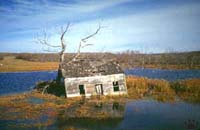
November in the prairies of Manitoba, Canada.
Wild, Wild East - Part 7
Most of Boreal fauna can be more easily seen in Northeastern
Canada, where human population is less dense. Even in the blaksoil prairies there
are numerous tiny islands of unploughed grasslands and wetlands. Large areas of
relatively unspoiled taiga cover most of Canada, except for the more "civilized"
parts along the US border and the Great Lakes.

Moose (Alces americanus),
Riding Mt., Manitoba. |
One of the best places to see boreal animals is
Riding Mountain National Park in Manitoba, Canada. It has an unusual diversity
of habitats, from open prairie to bogs, and from small patches of hardwood forest
to wet spruce woods. |

Moose (Alces americanus),
Riding Mt., Manitoba. |
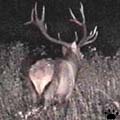 |
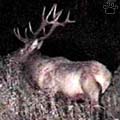 |
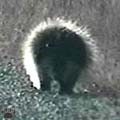 |
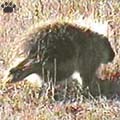 |
| Elk (Cervus canadensis
wapiti) and porcupine (Erethyzon dorsatum), Riding Mt., Manitoba. |
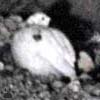
Willow ptarmigan
(Lagopus lagopus),
Wapusk National Park. |
Another outstanding
point of meeting landscapes is the western coast of Hudson Bay. Because of cold
currents, the timberline occurs further south here than in any other non-montane
place in the World, except for parts of Russian Far East.
Narrow stripe of tundra stretches along the coast to the latitude of Glasgow,
Copenhagen and Moscow. |
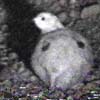
Willow ptarmigan
(Lagopus lagopus),
Wapusk National Park. |
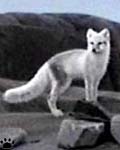 |
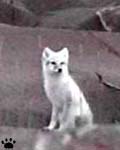 |
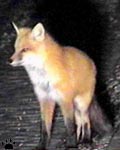 |
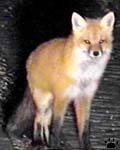 |
| Arctic (Vulpes lagopus)
and red (V. vulpes) foxes, Churchill, Manitoba. |

Tepee of Cree Indians,
Wapusk Nat'l Park. |
In Cape Churchill area and nearby Wapusk Nat'l
Park, tundra and taiga species interact in borderline zone. For example, Arctic
hare (Lepus arcticus) is common in rocky tundras around Churchill, but
just a mile away, in the forest, it is replaced by smaller snowshoe hare (L.
americanus). |

Snowshoe hare,
Wapusk NP. |
 |
 |
 |
 |
 |
| Arctic hare, Churchill,
Manitoba. |
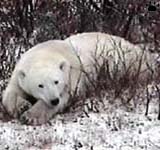
Polar bear, Wapusk National Park. |
The most famous inhabitants of Churchill
area are polar bears (Ursus maritimus) of Hudson
Bay population. Unlike their relatives in the High Arctic, they spend summer in
the taiga, and emerge on the coast in October. Here they wait for the bay to freeze
over, sleeping in bushes or seaweed, feeding on berries or garbage, and entertaining
tourists. |
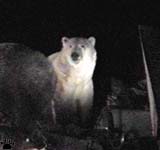
Polar bear, Churchill garbage dump. |
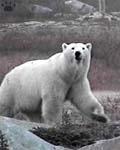 |
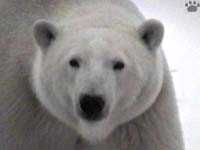 |
 |
| Polar bears, Cape Churchill,
Manitoba. |
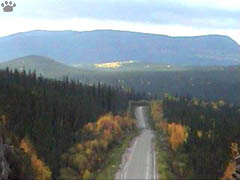
Trans-Labrador Highway. |
One of the most scenic parts of Northeastern Canada
is 1200 km-long Trans- Labrador Highway. |
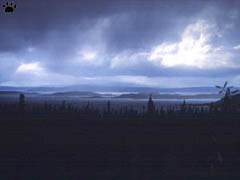
Manicougah meteor crater, Quebec. |
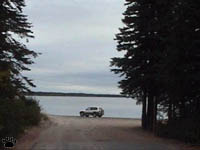
End of the Trans-Labrador Highway. |
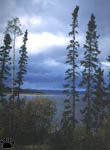
Lake Melville. |
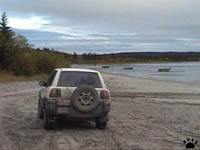
Mostly unpaved, this road is not an easy drive. |
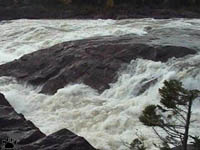
Muskrat Falls, Labrador. |
This road passes near the largest meteor crater
in North America, a few large waterfalls, and through taiga forests full of wildlife,
before ending in New River, an Innu village at Lake Melville. |
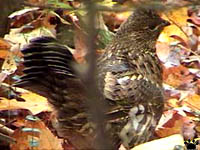
Ruffed grouse (Bonasa umbellus), Quebec. |
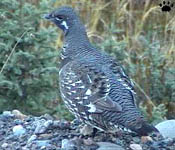 |
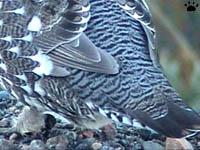 |
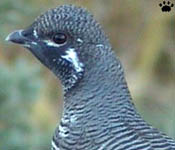 |
| Young male spruce grouse
(Falcipennis canadensis), Trans-Labrador Highway. |
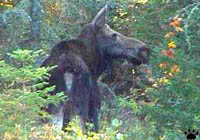
Moose, Trans-Labrador Highway. |
In October, dozens of spuce and ruffed grouse
can be seen on highway shoulders, as they swallow small pebbles to mulch food
in their stomachs during the winter. |
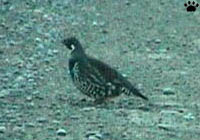
Adult male spruce grouse, Labrador. |
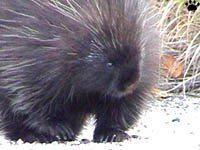 |
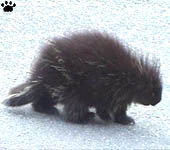 |
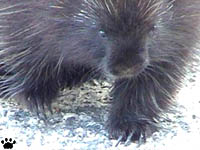 |
| Porcupine, Trans-Labrador
Highway. |

Porcupine, Trans-Labrador Highway. |
The landscape of Northern Canada is largely shaped
by two species of rodents: beavers (Castor canadensis), who create ponds
and lakes, and porcupines (Erethizon dorsatum), who control tree growth
and forest composition. Both are easy to see, especially in remote places like
Labrador Peninsula. |
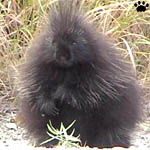
Porcupine, Trans-Labrador Highway. |
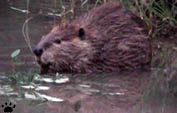
Beaver, Trans-Labrador Highway. |
I am yet to see the most interesting part of Canada
- its Arctic islands. I'm yet to figure out a way to travel there without spending
thousands of dollars on local flights. As soon as I get there, this page will
be updated. |
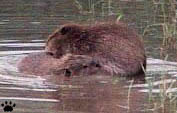
Playing beavers, Trans-Labrador Highway. |

Mountains of Northern Labrador.
Back to Part 6
Home
|